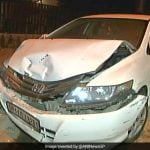
New Delhi: Suresh Jain has generated graphs and numbers on his desktop that outline what it will take for the National Capital Region, plagued by dangerous air pollution levels that peak each winter, to dramatically clean its air.
His calculations predict a possible 66 per cent drop in inhalable particulate matter (PM) from passenger vehicles and a 90 per cent fall in PM emissions from goods vehicles — but only if the government pushes through policies that disruptively change transportation habits.
Such cuts in PM emissions could lead to vast improvements in air quality because multiple studies have suggested that vehicle tailpipe emissions make up over 30 per cent of PM over India’s most polluted cities.
“But are we willing to pay the price to breathe cleaner air?”
Jain and other environmental experts are happy that one key policy measure is in the pipeline: the Centre last year announced new emission standards and fuel quality for all vehicles from 2020.
The Bharat Stage VI standards are expected to lower PM by 82 per cent from diesel cars and 67 per cent from heavy duty vehicles.
But experts caution about the hurdles facing other critically important policies, meant to encourage the use of public transport, nudge people away from personal diesel cars, phase out old vehicles and enforce on-road emission checks.
Diesel vehicles have traditionally been more polluting than petrol vehicles. But the automobile industry and consumers across India have piggybacked on diesel’s low cost, although the subsidy is intended to benefit the farmers who use it for tractors and water pumps.
The New Delhi-based non-government Centre for Science and Environment (CSE) says the proportion of diesel cars among the new cars sold nationwide rose from 4 per cent in 1998-99 to 16 per cent in 2003-04 and to 54 per cent in 2011-12.
Activists campaigning against diesel vehicles have highlighted that the World Health Organisation has classified diesel exhaust as carcinogenic. A typical diesel car emits about 10 times the levels of oxides of nitrogen spouted by a petrol car. These compounds can trigger exacerbations of asthma and other health disorders.
“We’re now seeing a backlash against diesel in many countries. Beijing has already banned diesel, and London and Paris are phasing out diesel cars,” said Anumita Roychowdhury, CSE executive director.
Several expert panels have since the year 2000 advised the government to introduce high additional excise or an emission tax to offset the fuel price advantage and discourage private diesel cars.
“But we haven’t seen willingness to do this, possibly because of automobile industry pressure and lack of understanding of the health risks of diesel,” Roychowdhury said.
But some engineers argue that the problem with diesel vehicles comes from old engines and not new ones.
“Diesel has been unfairly demonised,” said Avinash Aggarwal, professor of mechanical engineering at the Indian Institute of Technology, Kanpur.
“If we instantly eliminate all diesel vehicles older than 15 years from India’s roads, we’d cut emissions by over one-third. The real issue is effective enforcement of such bans.”
But Roychowdhury and others cite tests that suggest that even modern diesel cars have failed to achieve their prescribed Euro VI emission standards when tested on road conditions.
The emissions study by Jain and his colleagues at TERI University predicts dramatic cuts in PM emissions if all vehicles meet the prescribed emission standards and goods vehicles are also fitted with diesel particulate filters.
The study predicts large PM emission cuts from passenger cars if local authorities augment public transport networks, increase parking fees by up to 10 times (from the current Rs 20 to Rs 200) and create dedicated bus corridors that allow buses to maintain speeds up to 25kmph.
“Our main finding (is that) we need multiple policy measures to significantly reduce vehicular emissions,” Jain said.
Some environmental scientists assert that achieving cleaner air demands actions beyond vehicular emissions.
“Industrial stack emissions, waste burning in our cities, and natural sources — they all need to be addressed,” said Tirthankar Banerjee, assistant professor at the Banaras Hindu University, who earlier this year published a paper that quantified how much each of these sources contributes to air pollution.
“The policies and the technologies needed for cleaner air are clear,” said Jain, professor of air pollution and health at TERI University in New Delhi, who has spent over a decade trying to determine how government policies might help curb air pollution.
Source;-the telegraph




